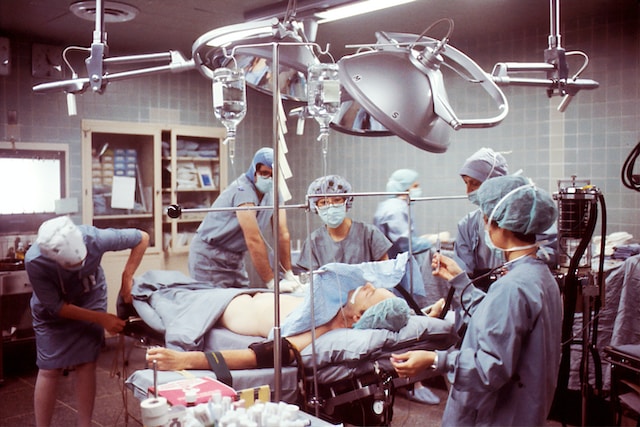Introduction: In the ever-advancing field of medicine, surgery stands as a testament to human ingenuity and perseverance. Throughout history, surgical techniques have evolved significantly, moving from crude and often barbaric methods to precise and minimally invasive procedures. From the ancient practice of bloodletting with leeches to the cutting-edge use of lasers, the journey of surgical innovation is a fascinating one. This article explores the remarkable evolution of surgery through the ages, highlighting the milestones that have transformed this critical medical discipline.
- Ancient Beginnings: Surgery finds its roots in the ancient civilizations of Egypt, India, and Greece. In these early cultures, surgical procedures were performed primarily to address injuries, fractures, and war-related wounds. The use of primitive tools, such as flint knives and bronze needles, was common. Bloodletting, a practice believed to restore balance in the body, was also prevalent. Leeches were employed to remove “excess” blood, a technique that persisted until the 19th century.
- Revolutionary Discoveries: The Renaissance era witnessed a surge in surgical advancements. Ambroise Paré, a French barber-surgeon, introduced the concept of ligature, replacing cauterization as a means to control bleeding. This breakthrough significantly reduced the mortality rates associated with surgery. Another milestone was the invention of anesthesia by William Morton in the mid-19th century. The introduction of ether and later chloroform made surgery painless and opened doors to more complex procedures.
- Modern Surgical Techniques: The 20th century marked a turning point in surgical innovation. The discovery of antibiotics, such as penicillin, revolutionized infection control, ensuring safer surgeries. The introduction of sterilization techniques, like Joseph Lister’s use of carbolic acid, further reduced the risk of postoperative infections. Surgeons also embraced X-rays and radiography, enabling them to visualize internal structures and diagnose conditions more accurately.
- Minimally Invasive Surgery: The advent of laparoscopy in the late 20th century heralded a new era in surgery. Instead of large incisions, surgeons began using small keyhole openings, reducing patient trauma and accelerating recovery times. Laparoscopic techniques, initially employed in gallbladder removal, expanded to encompass a wide range of procedures, including heart surgeries, orthopedic repairs, and cosmetic interventions. Robotics and advanced imaging technologies have further enhanced precision and efficiency in minimally invasive surgery.
- Laser Surgery: Laser technology has emerged as a game-changer in modern surgery. Lasers offer remarkable precision and can be utilized in diverse specialties. From ophthalmology, where lasers correct vision disorders, to dermatology, where they remove skin imperfections, lasers have opened new frontiers in surgical treatment. In addition, laser technology has found applications in delicate procedures like neurosurgery and cancer treatment, where it enables surgeons to target tumors with unparalleled accuracy.
Conclusion: From the humble beginnings of leeches and crude tools to the sophisticated laser-assisted surgeries of today, the evolution of surgical techniques is a testament to human progress and innovation. The journey has been marked by remarkable discoveries, breakthroughs, and a relentless pursuit of excellence. As we look to the future, the field of surgery will undoubtedly continue to evolve, pushing boundaries and transforming the lives of patients worldwide.












